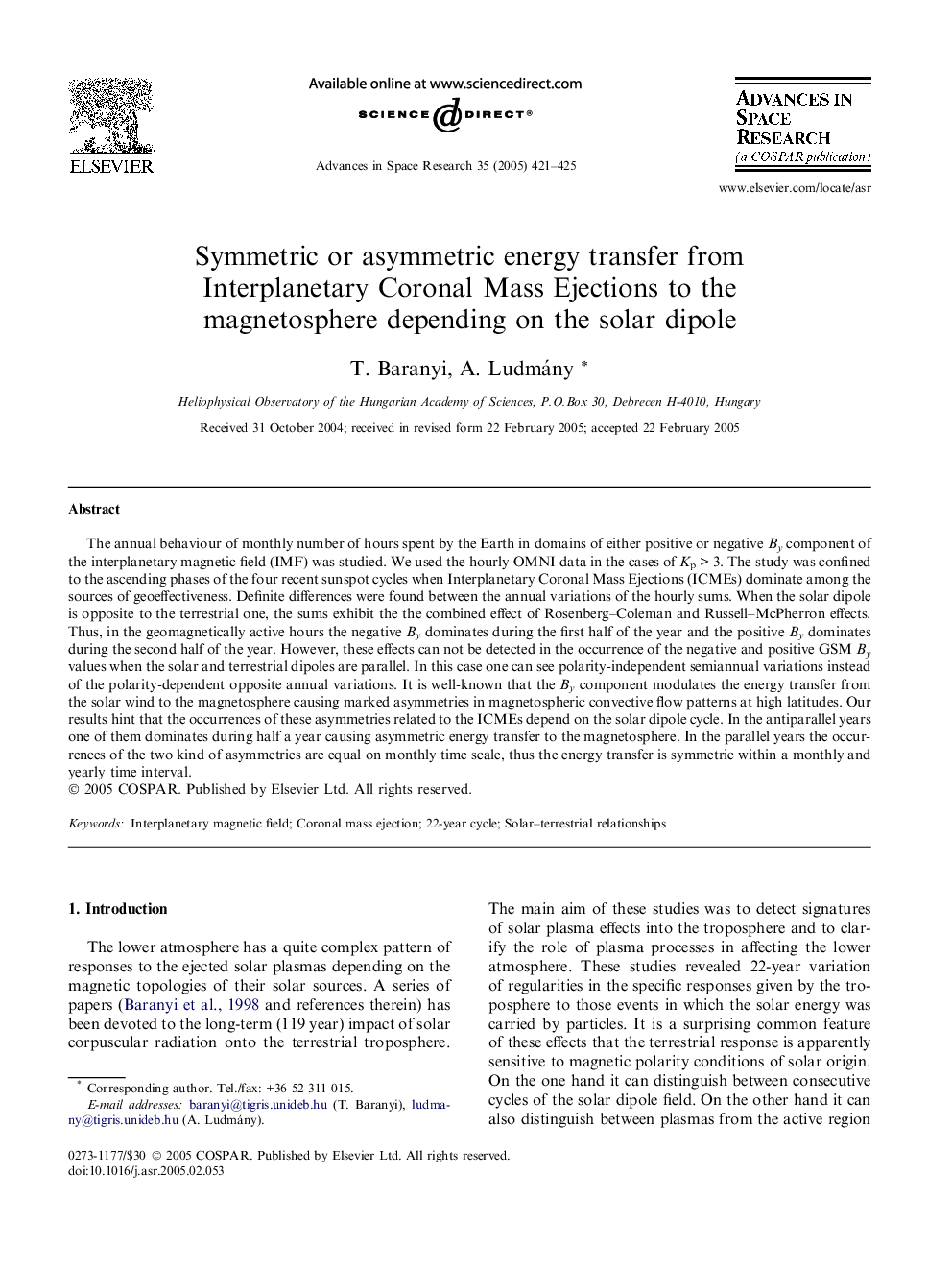| Article ID | Journal | Published Year | Pages | File Type |
|---|---|---|---|---|
| 10695192 | Advances in Space Research | 2005 | 5 Pages |
Abstract
The annual behaviour of monthly number of hours spent by the Earth in domains of either positive or negative By component of the interplanetary magnetic field (IMF) was studied. We used the hourly OMNI data in the cases of Kp > 3. The study was confined to the ascending phases of the four recent sunspot cycles when Interplanetary Coronal Mass Ejections (ICMEs) dominate among the sources of geoeffectiveness. Definite differences were found between the annual variations of the hourly sums. When the solar dipole is opposite to the terrestrial one, the sums exhibit the the combined effect of Rosenberg-Coleman and Russell-McPherron effects. Thus, in the geomagnetically active hours the negative By dominates during the first half of the year and the positive By dominates during the second half of the year. However, these effects can not be detected in the occurrence of the negative and positive GSM By values when the solar and terrestrial dipoles are parallel. In this case one can see polarity-independent semiannual variations instead of the polarity-dependent opposite annual variations. It is well-known that the By component modulates the energy transfer from the solar wind to the magnetosphere causing marked asymmetries in magnetospheric convective flow patterns at high latitudes. Our results hint that the occurrences of these asymmetries related to the ICMEs depend on the solar dipole cycle. In the antiparallel years one of them dominates during half a year causing asymmetric energy transfer to the magnetosphere. In the parallel years the occurrences of the two kind of asymmetries are equal on monthly time scale, thus the energy transfer is symmetric within a monthly and yearly time interval.
Related Topics
Physical Sciences and Engineering
Earth and Planetary Sciences
Space and Planetary Science
Authors
T. Baranyi, A. Ludmány,
